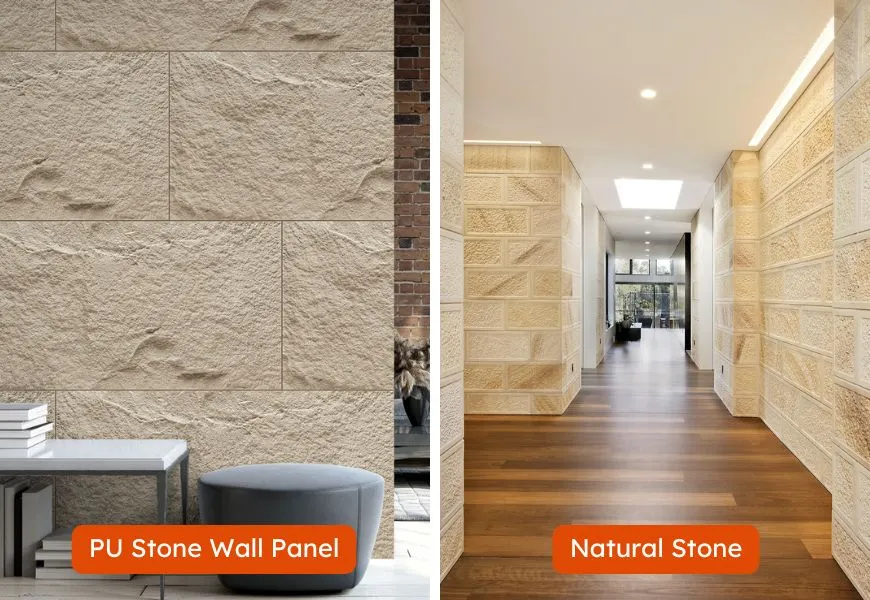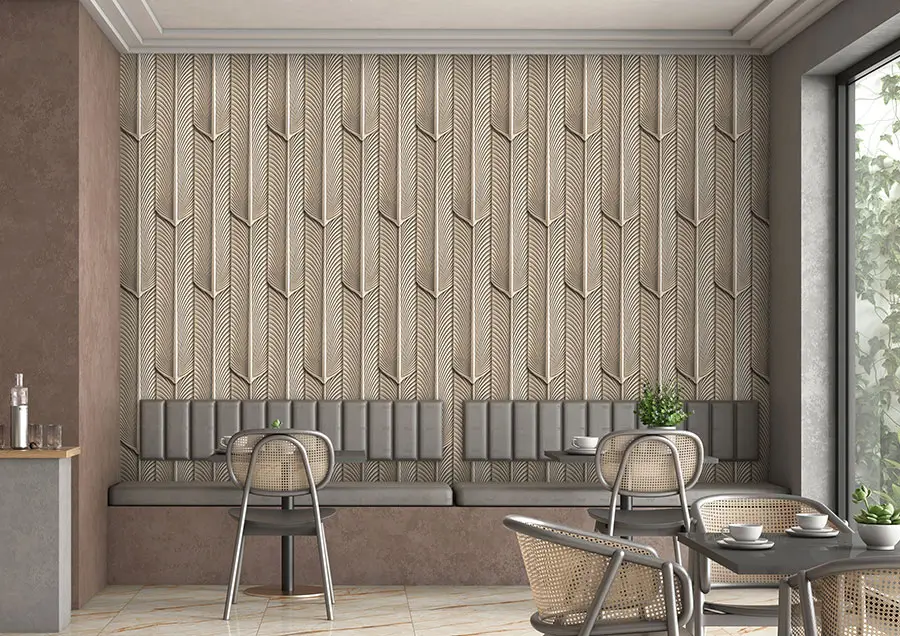
When it comes to designing your home or commercial space, wall coverings play a crucial role in setting the tone and aesthetic. PU stone wall panels are the most popular among different wall covering options right now.
However, people face difficulty in choosing between PU stone wall panels and natural stone. Each has its own set of advantages and disadvantages. In this blog, we will compare PU stone panels with natural stone to help you decide which option is better for your needs.
What Are PU Stone Wall Panels?
PU (Polyurethane) stone wall panels are made from a high-density polymer that replicates the appearance and texture of natural stone. They are lightweight, durable, and designed to be easily installed on various surfaces.
Artisun, a leading manufacturer, uses high-quality materials and precision technology to create PU stone wall panels that offer an offset appearance with a patterned ashlar surface backed by a solid wall.
Learn More: Overview Of PU Stone Wall Panels By Artisun Industries
Advantages of PU Stone Wall Panels
1. Lightweight: PU stone wall panels are much lighter than natural stone, making them easier to handle and install. This can significantly reduce labour costs and installation time.
2. Cost-Effective: PU stone wall panels are generally more affordable than natural stone. They provide a similar aesthetic at a fraction of the cost.
3. Versatility: Available in a wide range of textures, colours, and patterns, PU stone wall panels can suit various design preferences and styles.
4. Durability: Despite being lightweight, PU stone panels are highly durable and resistant to weather, moisture, and UV rays. They maintain their appearance for years with minimal maintenance.
5. Easy Installation: These panels are designed for quick and easy installation, often requiring only basic tools and adhesives. This makes them a convenient option for DIY enthusiasts and professionals alike.
Disadvantages of PU Stone Wall Panels
1. Artificial Feel: Some people may feel that PU stone wall panels lack the authentic look and feel of natural stone.
2. Limited Heat Resistance: While PU stone panels are durable, they are not as heat-resistant as natural stone. They may not be suitable for areas exposed to high temperatures, like around fireplaces or stoves.
What Is Natural Stone?
Natural stone is exactly what it sounds like—stone that is quarried from the earth. It comes in various forms, such as granite, limestone, marble, and slate. Natural stone has been used in construction and design for centuries due to its durability and timeless beauty.
Advantages of Natural Stone
1. Authenticity: Natural stone offers an unmatched authentic look and feel. Each piece is unique, with its textures, colours, and patterns.
2. Durability: Natural stone is incredibly durable and can last for decades. It is resistant to scratches, chips, and weathering.
3. Heat Resistance: Natural stone can withstand high temperatures, making it an ideal choice for areas like fireplaces and outdoor kitchens.
4. Increased Property Value: Using natural stone in your design can increase the value of your property due to its high-end appeal and long-lasting quality.
Disadvantages of Natural Stone
1. Cost: Natural stone is generally more expensive than PU stone wall panels. The cost of quarrying, transporting, and installing natural stone can add up quickly.
2. Heavy Weight: Natural stone is very heavy, which can complicate installation and require additional structural support. This can increase both labour costs and installation time.
3. Maintenance: Natural stone requires regular maintenance to keep it looking its best. It may need sealing, cleaning, and occasional repairs.
4. Limited Design Flexibility: While natural stone offers a timeless aesthetic, it can be less versatile in terms of colour and pattern options compared to PU stone panels.
Comparing Specific Aspects
1. Installation
PU stone wall panels are designed for easy installation, often requiring just adhesive and basic tools. They can be installed on a variety of surfaces, including drywall, concrete, and wood. Natural stone, on the other hand, requires more complex installation processes.
It often needs to be cut to size, and the heavy weight means it must be securely anchored, mostly requiring professional installation.
2. Maintenance
These PU wall panels are virtually maintenance-free. They do not require sealing and can be easily cleaned with a damp cloth. Natural stone requires more care, including sealing to prevent staining and regular cleaning to maintain its appearance. Over time, natural stone may also need repairs for chips or cracks.
3. Environmental Impact
PU stone wall panels are made from synthetic materials and some are also produced from recycled materials, which make them environmentally friendly compared to natural stone. On the other side, natural stone is a natural resource, so quarrying and transporting it can have a significant environmental impact.
You May Also Like: Why PU Stone Wall Panels Are Popular Nowadays?
Conclusion
Both PU stone wall panels and natural stone have their own set of advantages and disadvantages. PU stone panels are a cost-effective, lightweight, and versatile option that offers easy installation and minimal maintenance. They are ideal for those looking for a quick and affordable way to enhance their spaces with the look of stone.
Natural stone, while more expensive and challenging to install, offers an authentic and timeless aesthetic that is unmatched by synthetic alternatives. Its durability, heat resistance, and ability to increase property value make it a worthwhile investment for many homeowners and designers.
Ultimately, the choice between these two depends on your specific needs, budget, and design preferences. By weighing the pros and cons of each option, you can make the best decision that suits your project.


